Insights from a veteran: Bill Mattocks is a U.S. military veteran passionate about helping other veterans navigate the VA disability process. After facing his own medical challenges, he became a strong advocate for using Guava to increase his disability rating by tracking symptoms and sharing organized health data with the VA.
Navigating the Veterans Affairs (VA) disability claim process can be complex and frustrating. Many veterans face denied claims, not because their disabilities aren’t legitimate, but because the documentation isn’t strong enough. A lack of detailed symptom tracking and a missing link between service and current health issues often lead to rejection.
Guava provides the tools to track, organize, and share the kind of data the VA needs to process your claim. By consistently logging their conditions, veterans like Bill Mattocks have submitted stronger claims and received higher disability ratings.
Whether you're starting your first claim or appealing a denial, Guava can help you present the clearest, most compelling case possible, even if it’s been years since your service.
The Basics of Filing a Disability Claim with the VA
The first step in getting your disability claim approved is understanding the requirements and what avenues to take. A couple of VA divisions will be involved in the process, the most commonly recognized being the Veterans Health Administration (VHA), which oversees veterans’ healthcare.
The Veterans Benefits Administration (VBA) is the other key branch involved in the process. The VBA is responsible for processing claims and providing monthly compensation to veterans with service-connected disabilities that continue to affect them. You can submit your claim online through the VA's website, by mail, or in person at a regional VA office.
What is a service-connected disability?
A service-connected disability is a medical condition caused or exacerbated by your military service. To qualify for VA disability benefits, you must show that your current diagnosis is a service-connected disability.
VA Disability Rates
If the VA establishes that your disability is service-connected, it will give you a ‘disability rating’ which ranges from 0% to 100%. This rating determines how much you’ll be paid monthly.
VA disability ratings are based on objective standards when possible–take measurable hearing loss as an example. In many cases, however, objective standards are not applicable, so metrics like symptom frequency, severity, and duration are used as rating criteria. This is where symptom tracking with Guava can make a significant difference in your claim.
Mattocks uses Guava to log his nightmares by taking notes each morning after he wakes up. By keeping this log, he can provide concrete evidence of the frequency and severity of his nightmares. This documentation supports his claims related to PTSD and helps him understand the effectiveness of his treatment outcomes.
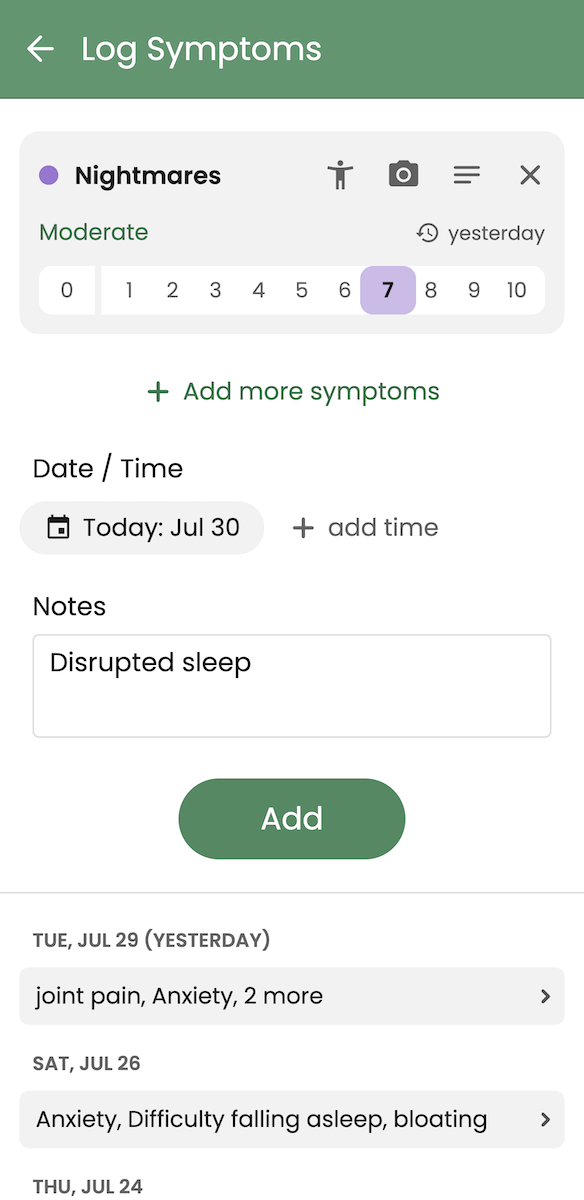
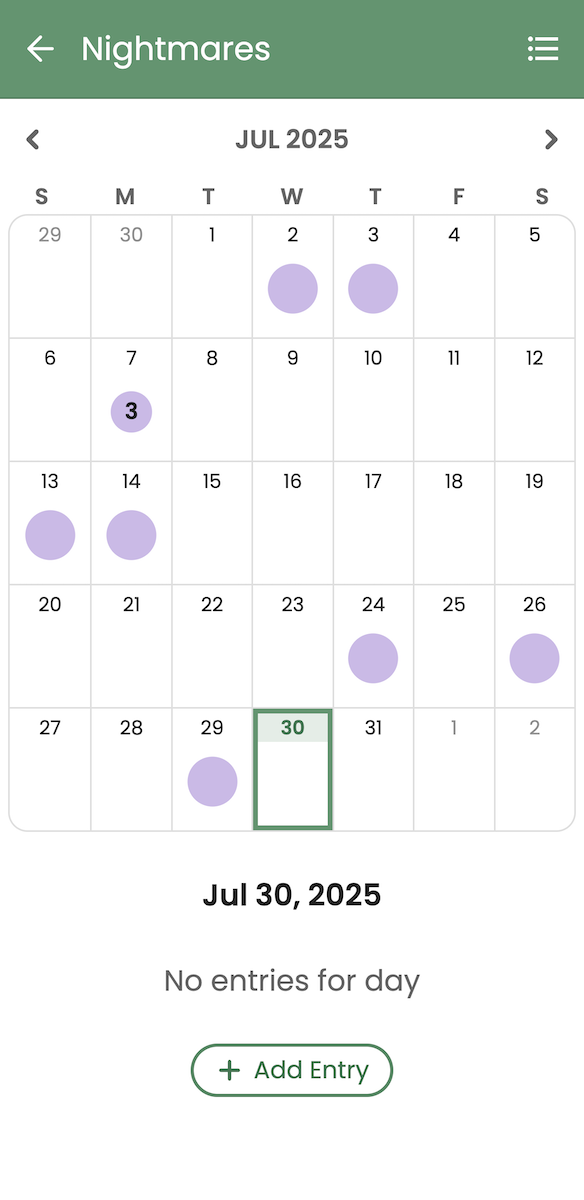
What kinds of conditions qualify for VA disability?
The VA recognizes a wide range of physical and mental health conditions that may be connected to military service. Some examples that can be documented with symptom logs include:
- Migraines
- Seizure Disorders
- Irritable Bowel Syndrome (IBS)
- Gastroesophageal Reflux Disease (GERD) / Acid Reflux
- Radiculopathy / Neuropathy
- Urinary Incontinence / Frequency
Building Strong Evidence for Your Claim
When you submit your claim, you’ll have to clearly present a current diagnosis and demonstrate how your condition originated during your service. The connection between your current condition and your service is called a “nexus.”
Mattocks noted that this is where many veterans make mistakes by failing to connect their condition to their military experience.
Whether or not your disability is obviously service-connected, there is specific evidence you should present that will strengthen your claim:
- Military and post-service medical records
- Current diagnosis from a medical professional
- Personal statement and buddy statements
- Symptom logs with dates, severity, and impact
- Nexus letter connecting your condition to your service
Medical Records & Current Diagnosis
Collect any available documentation supporting the claim, such as medical and service records. These can be records from the VHA and clinics outside of the VA which detail your diagnosis and disability.
Lay Evidence
Lay evidence can include both personal statements, which explain how your experiences and disability affects your life, and buddy statements, which come from fellow service members who witnessed the events leading to the disability.
For conditions that can be rated based on frequency, severity, or duration, personal symptom logs are incredibly effective. According to Mattocks,
“The VA considers veterans to be reliable reporters of their symptoms. While veterans are typically not medical professionals and cannot diagnose themselves, they can provide acceptable lay evidence that the VA will consider in determining disability awards.”
He went on to explain that symptom tracking is far more useful than verbal statements. For example, instead of explaining that “I get migraines every afternoon,” you should present log entries that include:
- Date & time
- Symptom(s) (e.g. headache, panic attacks, bloating)
- Severity (scale of 1-10 or mild/moderate/severe)
- Duration
- Impact (e.g. missed work, had to lie down, used medication, etc.)
How much data should I include in my claim?
The VA prefers concise symptom data templates to facilitate efficient assessments by raters. Keeping logs to 1-2 months helps ensure that the information is relevant and manageable for review.
How to Use Symptom Tracking in Guava for Your Disability Claim
To log and share this information with the VA, Mattocks uses Guava, which is a tool built to help people track and manage their health in one place. Through Guava, he’s been able to export doctor’s records like weight and blood pressure readings from office visits, and combine them with his own symptom logs that document his conditions.
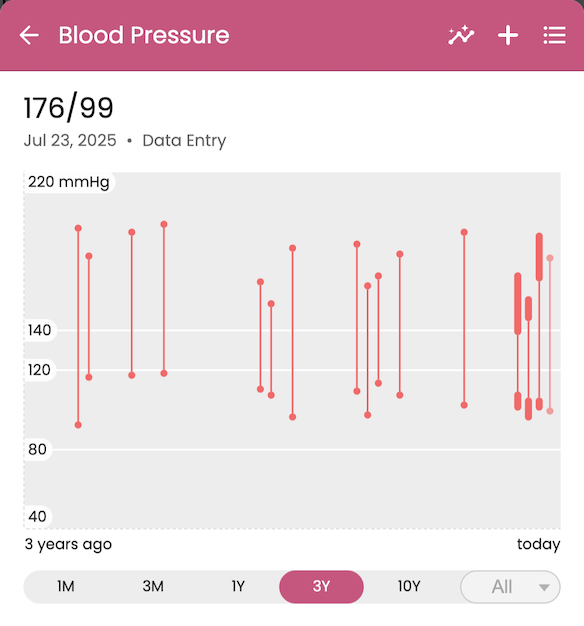
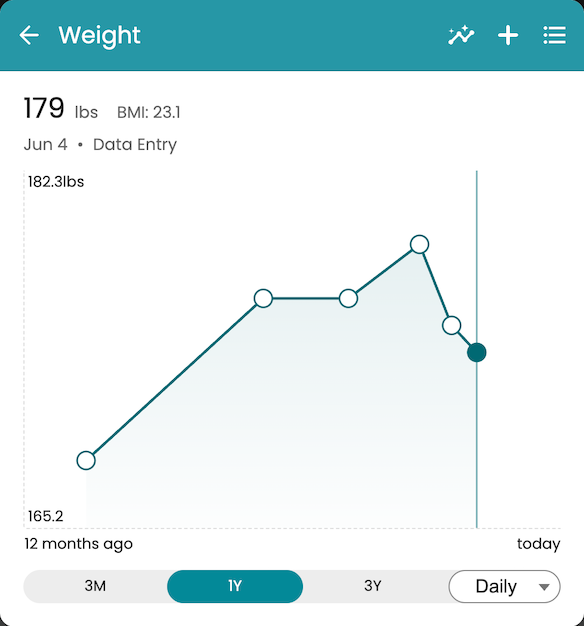
His symptom logs included migraines, nightmares related to PTSD, daytime sleepiness, GERD, and diabetic neuropathy. In addition to supporting his disability claims, he’s also been able to understand how his symptoms change with various treatments and lifestyle changes.
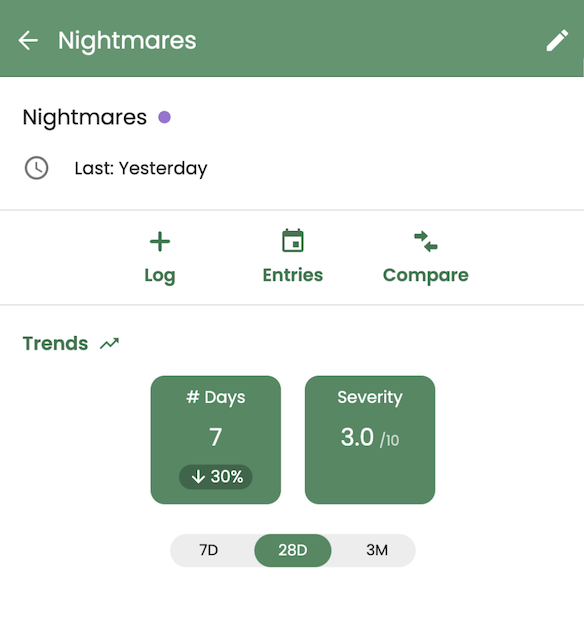
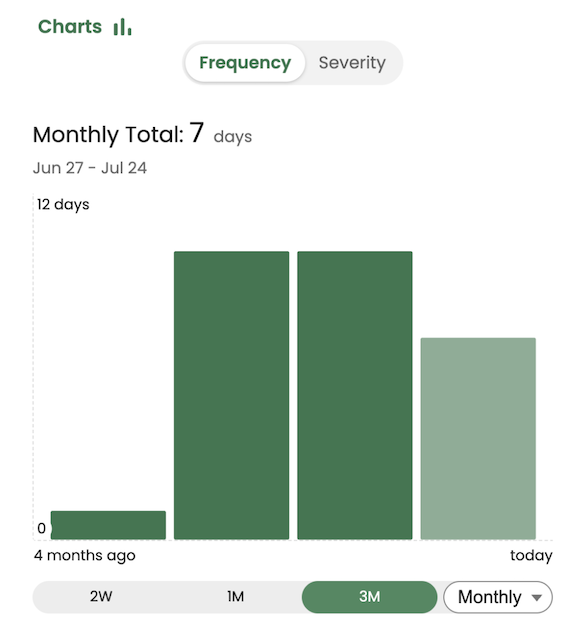
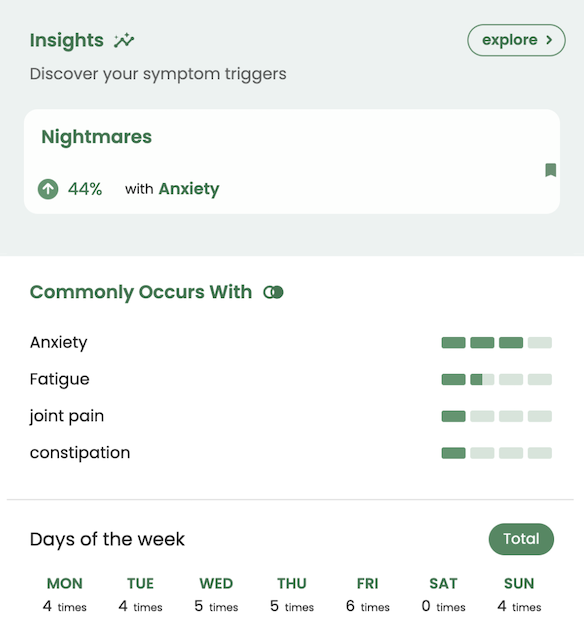
After logging your symptoms for a bit, you can export your data by clicking into a metric (like weight, blood pressure, heart rate, etc.) or a symptom (like fatigue, pain, anxiety, etc.). Select the list icon in the upper right corner, then select the download button to export the data as a PDF which can be easily shared with your doctor.
Additional Tips for Strengthening Your VA Disability Claim
Obtain a nexus letter
A nexus letter from a qualified healthcare provider can be crucial. This letter should explain how the disability is related to your military service, providing a medical opinion that connects the two.
Consult with a Veterans Service Officer (VSO)
A VSO can provide guidance on the claims process and help you understand what evidence is needed to establish a connection between your disability and military service.
Consider Secondary Claims
If a primary condition is service-connected, veterans may also explore filing claims for secondary conditions that have developed as a result of the primary condition.
Be Persistent
If a claim is initially denied, veterans have the right to appeal the decision. They can provide additional evidence or clarification during the appeals process.
The Bottom Line
Whether you're applying for the first time or fighting for an appeal, don’t underestimate the power of your own documentation. Consistent symptom logs, paired with medical records and lay evidence, can make all the difference in getting the compensation you deserve.






